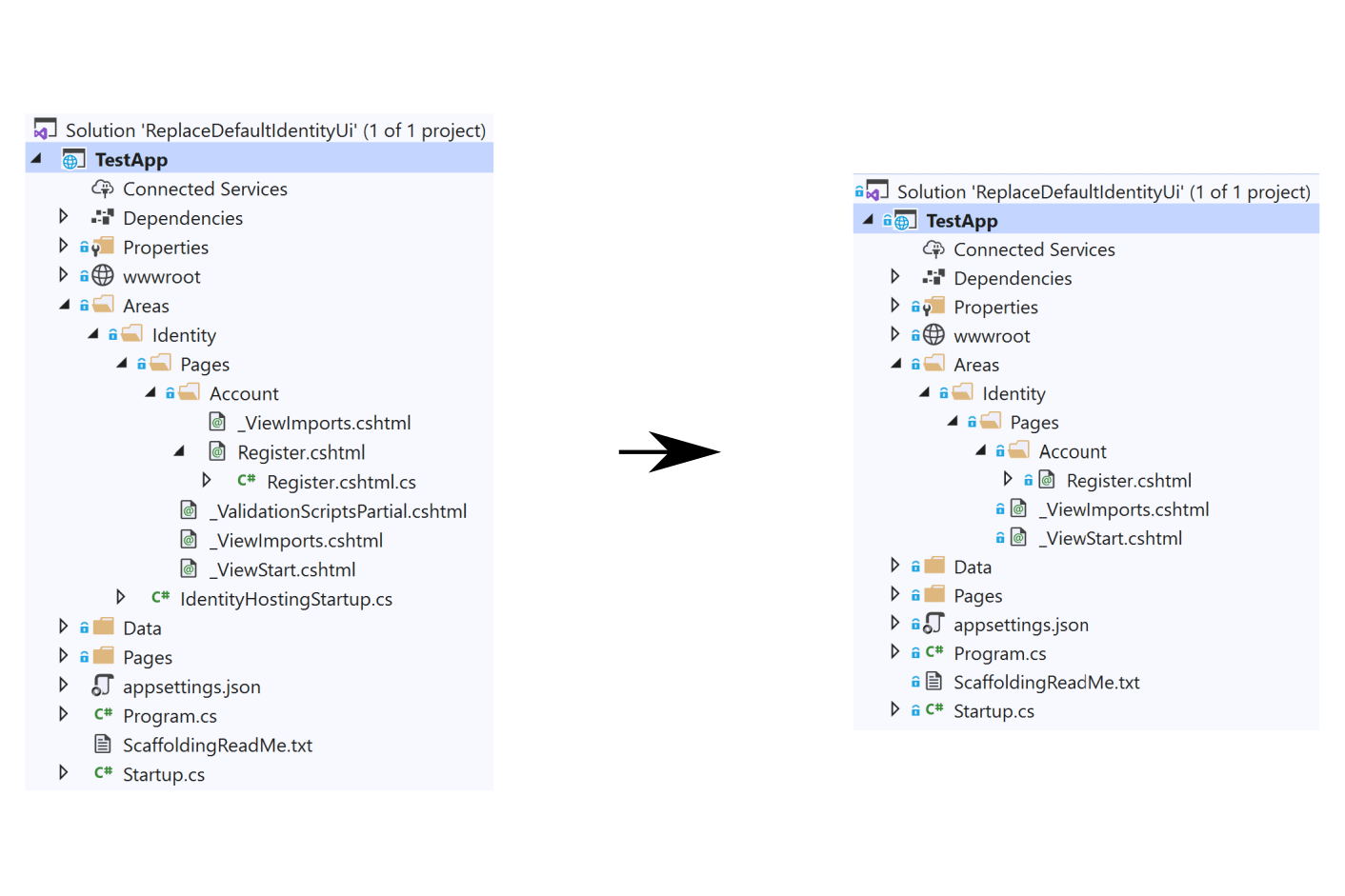ASP.NET Core Identity includes a default UI as a Razor library that enables you to quickly add users to an application, without having to build all the UI yourself. The downside is that if you want to customise any of the pages associated with the default UI, then you end up taking ownership of all the logic too. Even if all you want to do is add a CSS class to an element, you’re stuck maintaining the underlying page handler logic too.
In this post I show how you can replace the Razor views for the default UI, without taking ownership of the business logic stored in the Razor Page PageModel code-behind files. I show how you can use the ASP.NET Core Identity scaffolder to generate the replacement Razor Pages initially, but customise these to use the existing, default, PageModels.
Background: ASP.NET Core Identity
ASP.NET Core Identity is a series of services that provide functionality for managing and signing in users. You can use the Identity services to (among other things):
- Create users, and provide sign-in functionality
- Secure passwords using best practice, strong, hashing algorithms
- Generate short-lived tokens for email confirmation or multi-factor authentication,
- Enable auto-lockout of users to prevent brute-force attacks.
- Allow logging in with third-party providers like Google and Facebook.
The Identity services provide APIs for achieving all these things, but you still have to arrange them all in the right order. You also have to write the UI that users use to interact with the services. Obviously, that’s a huge investment, and is working with sensitive data, so you have to be very careful not to introduce any security holes.
Prior to ASP.NET Core 2.1, your best bet for implementing this was to use the UI generated from the Visual Studio templates. Unfortunately, using templates means that your UI is fine initially, but you then have a lot of code to maintain. If a bug is found in the templates, you have to go and update it yourself. What are the chances of people doing that? Slim to none I’d wager.
Luckily, ASP.NET Core 2.1 introduced a default UI Razor Class Library that meant you could benefit from the same UI, without having dozens of Razor Pages in your application to maintain. If a bug is found in the UI, the NuGet package can be updated, and you seamlessly get the bug fix, and all is great.
Customising the default UI
Of course, using the default UI means: you have to use the default UI. I think it’s generally unlikely that users will want to use the default UI in its entirety, unless you’re building internal apps only, or creating a “throwaway” app. For a start, the login and register pages include references to developer documentation that most people will want to remove:

#asp.net core #asp.net core identity #auth
